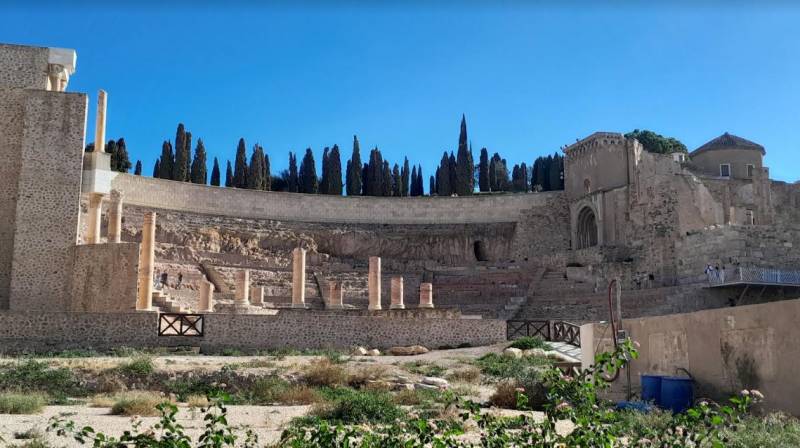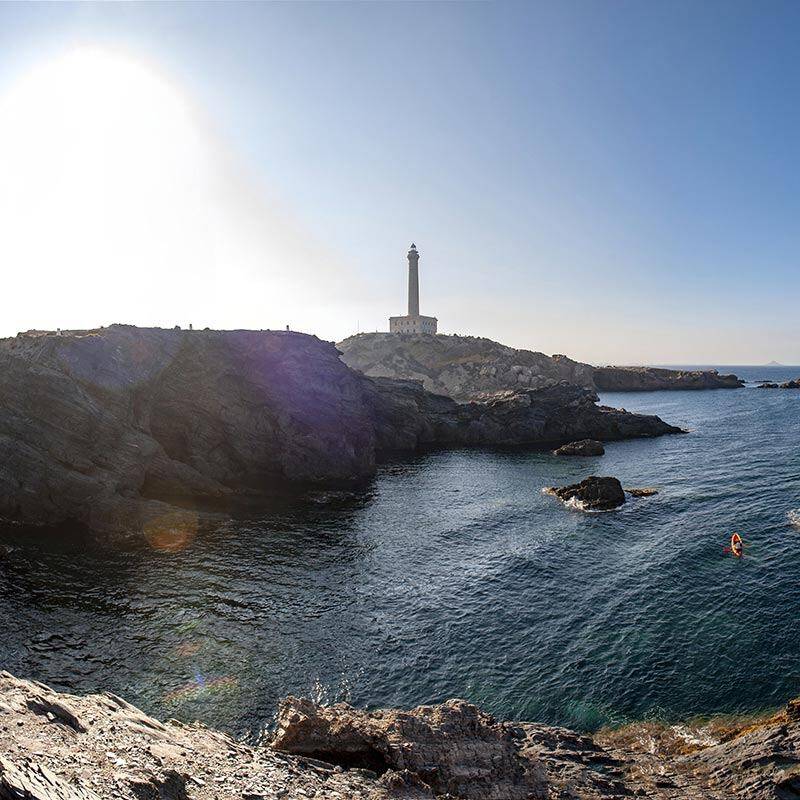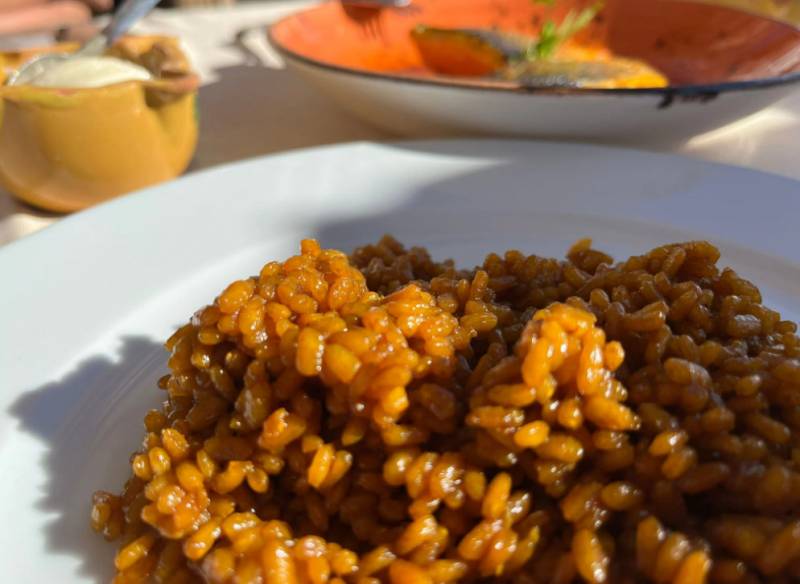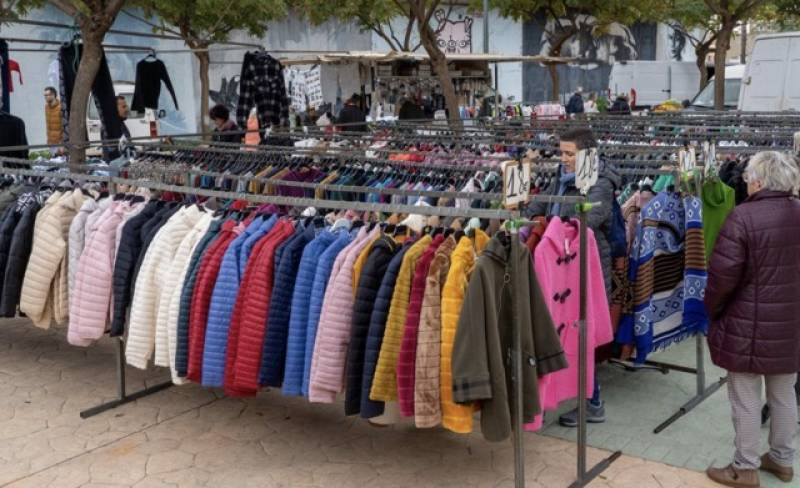-


 Welcome To
Welcome To CARTAGENA
CARTAGENA
 A must do visit
A must do visit The Roman TheatreCartagenaClick Here for more information
The Roman TheatreCartagenaClick Here for more information
 Welcome To
Welcome To CARTAGENA
CARTAGENA
- Region
- Águilas
- Alhama de Murcia
- Jumilla
- Lorca
- Los Alcázares
- Mazarrón
- San Javier
-
ALL AREAS & TOWNS
- AREAS
- SOUTH WEST
- MAR MENOR
- MURCIA CITY & CENTRAL
- NORTH & NORTH WEST
- TOWNS
- Abanilla
- Abarán
- Aguilas
- Alamillo
- Alcantarilla
- Aledo
- Alhama de Murcia
- Archena
- Balsicas
- Blanca
- Bolnuevo
- Bullas
- Cañadas del Romero
- Cabo de Palos
- Calasparra
- Camping Bolnuevo
- Campo De Ricote
- Camposol
- Canada De La Lena
- Caravaca de la Cruz
- Cartagena
- Cehegin
- Ceuti
- Cieza
- Condado de Alhama
- Corvera
- Costa Cálida
- Cuevas De Almanzora
- Cuevas de Reyllo
- El Carmoli
- El Mojon
- El Molino (Puerto Lumbreras)
- El Pareton / Cantareros
- El Raso
- El Valle Golf Resort
- Fortuna
- Fuente Alamo
- Hacienda del Alamo Golf Resort
- Hacienda Riquelme Golf Resort
- Isla Plana
- Islas Menores & Mar de Cristal
- Jumilla
- La Azohia
- La Charca
- La Manga Club
- La Manga del Mar Menor
- La Pinilla
- La Puebla
- La Torre
- La Torre Golf Resort
- La Unión
- Las Palas
- Las Ramblas
- Las Ramblas Golf
- Las Torres de Cotillas
- Leiva
- Librilla
- Lo Pagan
- Lo Santiago
- Lorca
- Lorquí
- Los Alcázares
- Los Balcones
- Los Belones
- Los Canovas
- Los Nietos
- Los Perez (Tallante)
- Los Urrutias
- Los Ventorrillos
- Mar De Cristal
- Mar Menor
- Mar Menor Golf Resort
- Mazarrón
- Mazarrón Country Club
- Molina de Segura
- Moratalla
- Mula
- Murcia City
- Murcia Property
- Pareton
- Peraleja Golf Resort
- Perin
- Pilar de la Horadada
- Pinar de Campoverde
- Pinoso
- Playa Honda
- Playa Honda / Playa Paraíso
- Pliego
- Portmán
- Pozo Estrecho
- Puerto de Mazarrón
- Puerto Lumbreras
- Puntas De Calnegre
- Region of Murcia
- Ricote
- Roda Golf Resort
- Roldan
- Roldan and Lo Ferro
- San Javier
- San Pedro del Pinatar
- Santiago de la Ribera
- Sierra Espuña
- Sucina
- Tallante
- Terrazas de la Torre Golf Resort
- Torre Pacheco
- Totana
- What's On Weekly Bulletin
- Yecla


- EDITIONS:
 Spanish News Today
Spanish News Today
 Alicante Today
Alicante Today
 Andalucia Today
Andalucia Today
article_detailMay, Las Cruces de Mayo, The crosses of May, a spring fiesta across the Region of Murcia
The Crosses of May is celebrated across Spain
Mayday is traditionally a time to celebrate the Spring and the 1st May is a national red day and Bank Holiday
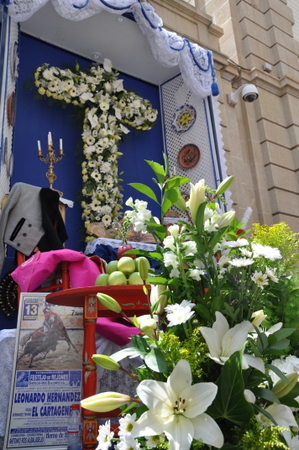 in Spain. However, many fiestas also take place on the 3rd May and combine with the Mayday celebrations.
in Spain. However, many fiestas also take place on the 3rd May and combine with the Mayday celebrations.The Fiestas of Las Cruces de Mayo is celebrated on the 3rd May officially.
Across the Region of Murcia, crosses are erected in the streets, dressed with flowers, and ornaments and celebrated in many different ways. There are Romerias, such as in Águilas, where horseback travellers travel from one church to the other and make floral offerings at each, Totana where the local choir visit the crosses and stop to sing at each, or Cartagena, where crosses are set up throughout the streets in the old quarter by clubs and associations as a focal point for open air bars with music and dancing.
In other areas the Crosses of May have become entwined with broader celebrations, such as in Alhama de
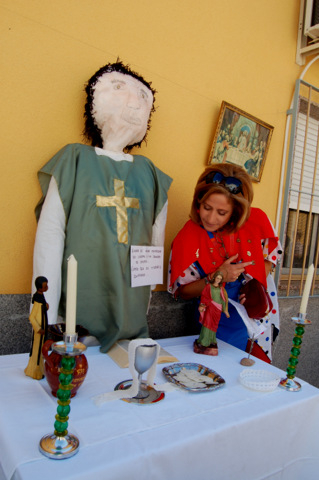 Murcia where the fiestas of Los Mayos involve "planting" satyrical "Mayos" figures in the streets as well as the floral crosses, which the Corremayos, townspeople dressed in colourful jesters outfits visit on the main day of Los Mayos. Its a colourful and happy festival, very popular with expats and families who board the tourist train and enjoy the visit to the various Mayos around the town.
Murcia where the fiestas of Los Mayos involve "planting" satyrical "Mayos" figures in the streets as well as the floral crosses, which the Corremayos, townspeople dressed in colourful jesters outfits visit on the main day of Los Mayos. Its a colourful and happy festival, very popular with expats and families who board the tourist train and enjoy the visit to the various Mayos around the town.In Abanilla a piece of the true Lignum Crucis is carried in Romería to a sanctuary outside of the town and in the pedanías of Murcia folk music and dancing combine with local traditions to celebrate the arrival of May.
The biggest celebration of the region is at Caravaca de la Cruz, where the fiestas of the Santísima y vera Cruz de Caravaca (Cross of Caravaca) take place, including the spectacular running of the wine horses, which itself is interwoven with the Moors and Christians.
Full details of all of these can be found in the What's on section
Religiously, the festival is rooted in the search by the Byzantine Empress Saint Helena for the cross on which
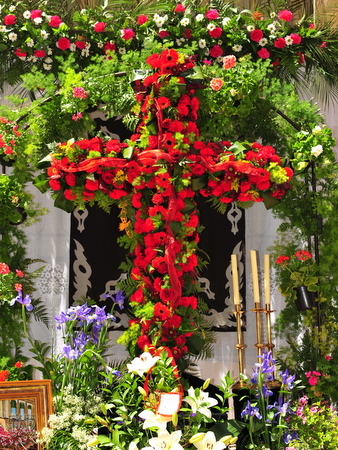 Jesus died, but the popular traditions connected to the festival certainly originate from pagan traditions brought to Spain by the Roman Empire .
Jesus died, but the popular traditions connected to the festival certainly originate from pagan traditions brought to Spain by the Roman Empire .Legend recounts that Emperor Constantine I, in the sixth year of his reign, confronted the barbarians on the banks of the Danube, in a battle where victory was believed to be impossible because of the great size of the enemy army. One night, Constantine had a vision of a cross in the sky, and by it the words "In hoc signo vincis" (With this sign, you shall be victorious). The emperor had a cross made and put it at the front of his army, which won an easy victory over the enemy multitude. On returning to the city and learning the significance of the cross, Constantine was baptized as a Christian and gave orders to construct Christian churches.
He sent his mother, Saint Helena, to Jerusalem in search of the True Cross, the cross on which Jesus died. Once there, Helena summoned the wisest priests to aid her attempt to find the cross. On Calvary Hill,
 traditionally considered the site of Jesuss crucifixion, she found three bloody logs hidden. In order to discover which was the True Cross, she placed the logs one by one over sick people, and even dead people, who were cured or resuscitated at the touch of the True Cross. The veneration of the True Cross, and the use of pieces of the True Cross as relics, begins at this time. Santa Helena died praying for all believers in Christ to celebrate the commemoration of the day the Cross was found.
traditionally considered the site of Jesuss crucifixion, she found three bloody logs hidden. In order to discover which was the True Cross, she placed the logs one by one over sick people, and even dead people, who were cured or resuscitated at the touch of the True Cross. The veneration of the True Cross, and the use of pieces of the True Cross as relics, begins at this time. Santa Helena died praying for all believers in Christ to celebrate the commemoration of the day the Cross was found.Caravaca de la Cruz has three fragments of the lignum crucis, the true cross in a reliquary, the Vera Cruz which resides in the Basilica overlooking the town. Caravaca de la Cruz is one of only 5 Holy Cities in the world due to the presence of this lignum crucis, which was given to the townspeople by the Pope after their own piece fo the true cross disappeared during the Civil War. Caravaca has been granted a Holy year every seven years, the next one falling in 2024.
article_detail
article_detailContact Murcia Today: Editorial 000 000 000 / Office 000 000 000

To be listed on the CAMPOSOL TODAY MAP please call +34 .

To be listed on the CONDADO TODAY MAP please call +34 .

Guidelines for submitting articles to Camposol Today
Hello, and thank you for choosing CamposolToday.com to publicise your organisation’s info or event.
Camposol Today is a website set up by Murcia Today specifically for residents of the urbanisation in Southwest Murcia, providing news and information on what’s happening in the local area, which is the largest English-speaking expat area in the Region of Murcia.
When submitting text to be included on Camposol Today, please abide by the following guidelines so we can upload your article as swiftly as possible:
Send an email to editor@camposoltoday.com or contact@murciatoday.com
Attach the information in a Word Document or Google Doc
Include all relevant points, including:
Who is the organisation running the event?
Where is it happening?
When?
How much does it cost?
Is it necessary to book beforehand, or can people just show up on the day?
…but try not to exceed 300 words
Also attach a photo to illustrate your article, no more than 100kb






